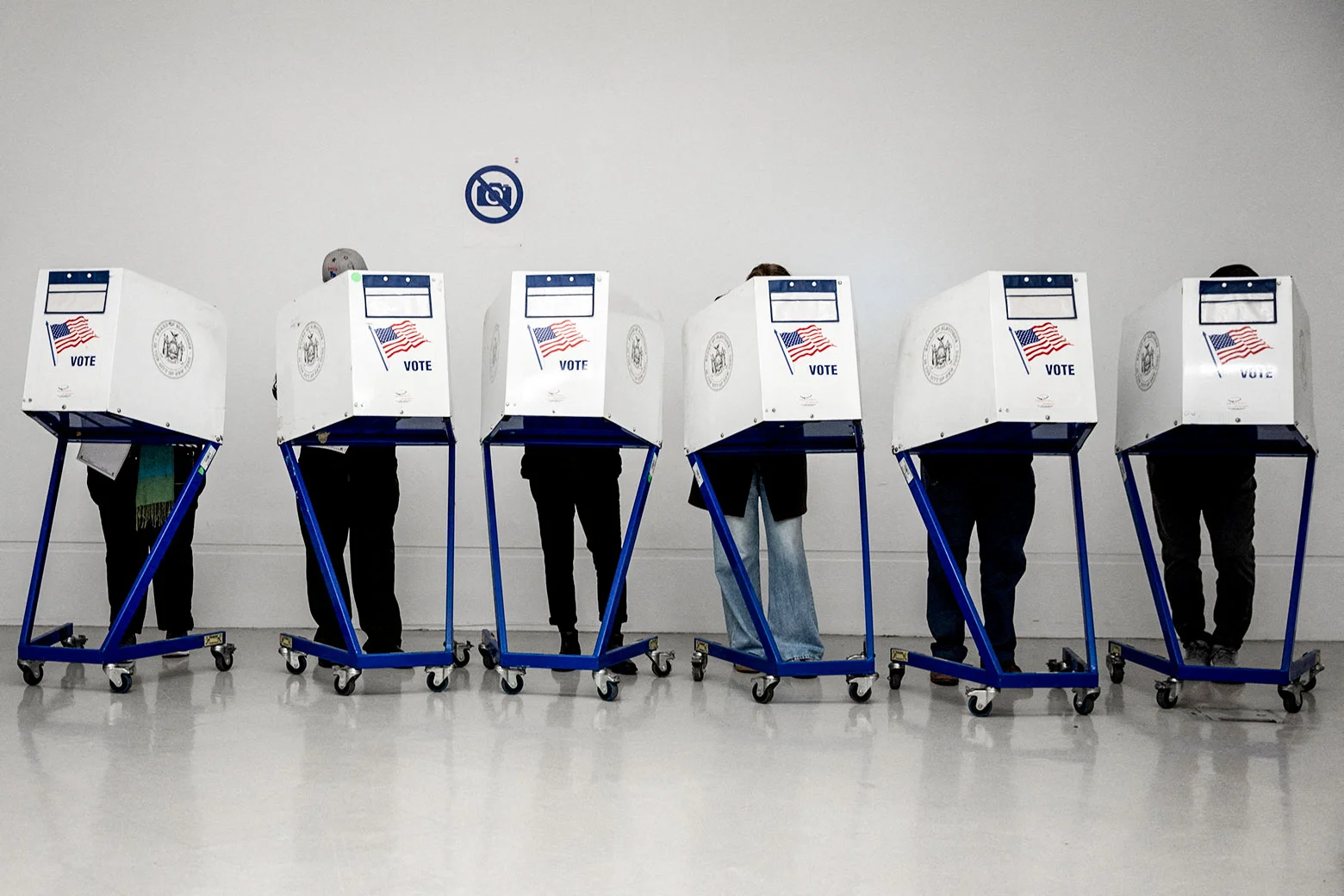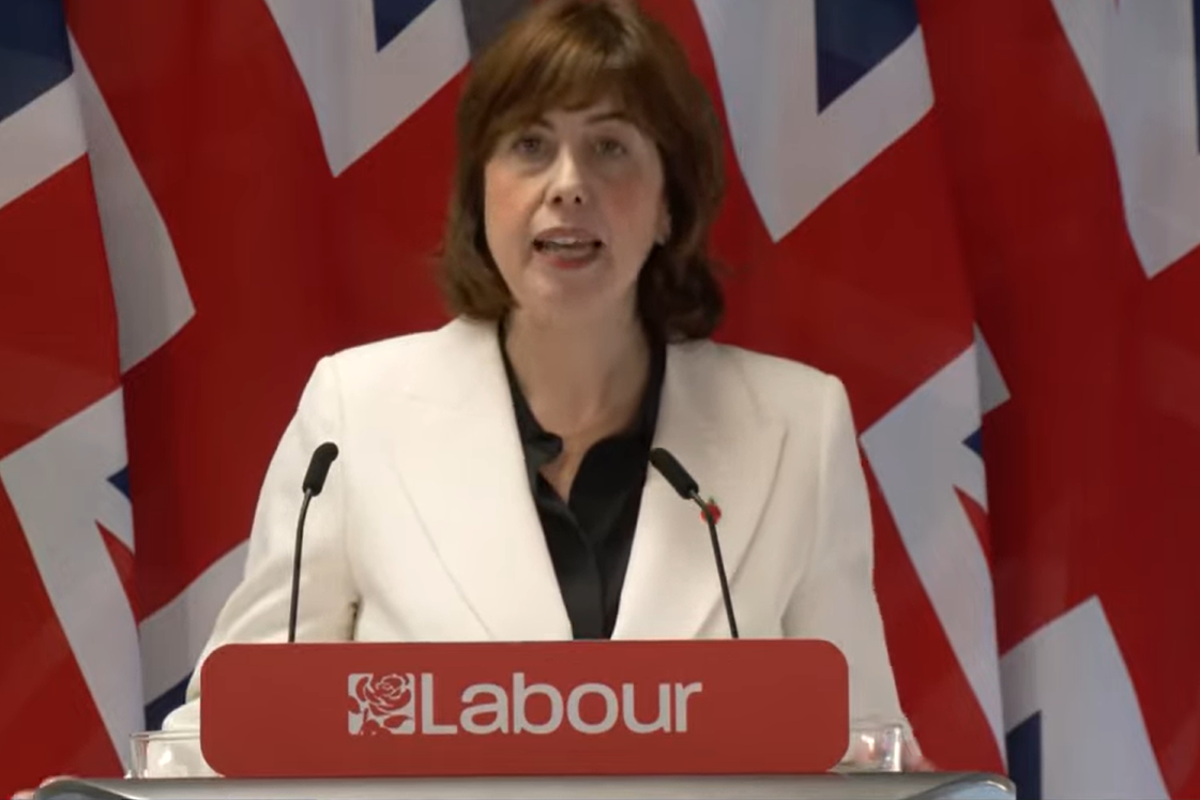Copyright Slate

Sign up for the Slatest to get the most insightful analysis, criticism, and advice out there, delivered to your inbox daily. After a long, dark year for Democrats, Tuesday night was a respite—and a romp: In a handful of states across the country, the party finally got the victories over Republicans it craved. The Virginia governor’s race was a blowout. So was a New Jersey governor’s race that many expected to be close. A GOP effort to oust liberal justices from Pennsylvania’s Supreme Court flopped, and California Gov. Gavin Newsom’s effort to redistrict his state in Democrats’ favor took a critical step forward. But as big as Tuesday night’s results were, the question everyone focused on was what this means for the midterms, when Democrats hope to retake some federal control and slow down Donald Trump’s agenda. Democrats spent the evening projecting confidence: “American voters just delivered a Democratic resurgence. A Republican reckoning. A Blue Sweep,” Ken Martin, Democratic National Committee chair, said in a statement Tuesday night. Republicans, meanwhile, displayed something between rationalization and cope. CNN’s Scott Jennings, the network’s lonely MAGA mouthpiece, dismissed any connection between the results and Trump, claiming that this was just a run-of-the-mill set of reliably blue states producing blue-state results. So who’s right here? Was Tuesday night a sign that voters have soured on Trump and are ready to hand Congress to Democrats next fall? Or is that wishful thinking? With no nationwide elections to look at, sussing out the answer requires an election expert who can look granularly at the races. Enter Steven Shepard, associate director of politics at Pew Research Center and a longtime polling reporter at Politico. He has a well-earned reputation among journalists as a perpetual skeptic, someone who refuses to be bamboozled by hype, cope, spin, and anything in between. So I trust Shepard for a straight answer on what to make of these elections, and whether Democrats are right to be as excited as they’re projecting. His answers were neither comforting nor too depressing. In short, we shouldn’t read too much into these elections, because they’re a small sample size that features a different electorate than the one we should expect to turn out next year. “One of the things we’ve seen pretty consistently over the last four to eight years is Democrats holding a turnout advantage, especially in elections outside of the federal elections every two years,” he said. But Shepard also noted that traditionally, the midterms swing away from the president who was just elected—and that Democrats have been very motivated to turn out against Donald Trump. In short, Democrats shouldn’t take Tuesday night’s results as a sign of any certainty that the midterms are in the bag. And if they want to take Trump down a peg, they better stay busy between now and next November. Here’s our conversation, edited and condensed for clarity. Shirin Ali: From a bird’s-eye view, how would you look at Tuesday night’s election results as a barometer for the 2026 midterms? Steven Shepard: Well, obviously the sample size here is very limited, right? We had governor’s races in New Jersey and Virginia, a statewide ballot measure in California, what are traditionally very sleepy judicial retention races. Even in the couple states that are competitive in general elections, generally speaking, [we] had races that are typically very, very low-turnout, sleepy races. There was also a public service commissioner race in Georgia, judicial retention races in Pennsylvania. These are not the types of things that motivate voters to come out typically, and I would caution against over-reading. I think there’s a sort of known tendency—and we’ve seen it this century, among voters, especially the year after a presidential election—to react in a thermostatic way. We choose a new president, things move maybe a little too far to one side, and they try to dial it back to where things were before. George W. Bush wins in 2000, in 2001 Democrats win the governorship in New Jersey and Virginia. Barack Obama wins in 2008, and Republicans win the governorships in New Jersey and Virginia, flipping those from Democratic control. Donald Trump wins in 2016, and in 2017 Democrats win the governorships in New Jersey and Virginia. Then, in 2021, after Joe Biden’s victory, Democrats barely hold on in New Jersey and the incumbent governor comes pretty close to losing in a surprise, and Republicans flip Virginia. In that way, this is what usually happens. Now, you mentioned 2026; what usually happens in a president’s midterm is his party loses seats in Congress the next year. Does what happened last night mean that’s going to happen in 2026? Not necessarily, but the trend that we have seen in modern politics held last night, where the party that loses the presidential election does well in these off-year races in this handful of states. We’ll see if that trend holds a year from now. Since November 2024, the Democratic brand has taken a severe beating, but given the party’s success last night, can they make any serious assertions about how voters are feeling about the party now? I do think all indications are that voters hold pretty low opinions of both political parties. Our polling is consistent with that, and especially what we’ve seen in our most recent survey in September was Democrats are very frustrated with their own party. Two-thirds of Democrats that we interviewed said they felt frustrated by the Democratic Party. I think that’s pretty consistent with some of the voter surveys in New Jersey and Virginia we saw this week that showed Democratic voters may be frustrated with their own party, but they’re still motivated to come out and vote against Republicans. Democrats now are more frustrated than Republicans were with their party four years ago. Democrats today are angrier with the Democratic Party than Republicans were four years ago. Democrats today, in our polling, are less hopeful about the Democratic Party than Republicans were about their party four years ago. After losing the 2020 election and after Jan. 6, Republicans were still more likely to say they were hopeful about the Republican Party than Democrats were hopeful about the Democratic Party. These polls were conducted before the elections this week, but I think there’s a sort of disconnect between how Democrats feel about the Democratic Party and how Democrats feel about voting in these elections. I think that that chasm was on display in these states. The Democratic candidates who won on Tuesday span a pretty wide spectrum, by basically every measure, including ideology. And when you look at this Democratic frustration, it’s pretty across the board, in our polling. Democrats who identified as liberal were a little bit more likely to say that they were frustrated with their party than Democrats who identified as moderate or conservative. This just means that this battle is going to play out in primaries throughout the country in the next two and a half years, culminating with the presidential primary in 2028. Did last night reveal any Republican-held House or Senate seats that now seem more flippable? Well certainly if there’s one thing we know especially about the House, it’s that the map is constantly changing, including last night where Democrats were able to get voters to approve mid-decade redistricting in California. We also saw Republicans, at least for the time being, apparently abandon an effort to redraw the congressional lines in Kansas to flip another seat back. I’m hesitant to try to draw too many conclusions about the race for the House, just because the rules of the game and the lines under which candidates are going to be running are constantly changing, and may change more in light of what we saw last night. For example, in Virginia, Democrats are trying to push through a very creative legislative maneuver, a ballot measure that would theoretically go to the voters early next year that would allow them to redraw the lines in Virginia. It’s hard to look at, say, the House seat that Abigail Spanberger once held, for example, in the D.C. suburbs, and say that Eugene Vindman, the Democratic member there, should feel good running a year from now. We don’t know what the lines are going to look like, necessarily, a year from now. In the Senate, we all know that the map is difficult for Democrats. There aren’t a lot of seats in states where Kamala Harris did well in the last presidential election. However, you know, you see the kind of range of outcomes that are perhaps possible, and certainly I think both parties will be looking at the map again in light of what we saw last night. Outside of Virginia, New Jersey, and California, states that are reliably blue, local Democrats in deep-red states like Georgia and Mississippi also managed to flip some Republican-held seats. That feels significant! But does it mean much? Especially given the modern turnout dynamics, one of the things we’ve seen pretty consistently over the last four to eight years is Democrats holding a turnout advantage, especially in elections outside of the federal elections every two years, and also outside of the presidential elections every four years. Whereas in the Obama era, it was Democrats who struggled to get their base voters to turn out for lower-turnout elections like those in off years, or even midterms, and certainly in special elections held outside of the usual calendar. What we have seen in most of the Trump era, on the Republican side, is that it’s Republicans now who are having that kind of trouble. For example, our Pew Research Center–validated voter study back in 2016 and 2020 asked people who they voted for right after the presidential election and whether they voted. We then validated responses according to their voter file and whether they turned out to cast a ballot or not. We found in 2016 and 2020, people who said that they didn’t end up voting in the election would have favored the Democratic candidate, so either Hillary Clinton in 2016 or Joe Biden in 2020. But in 2024, it was Donald Trump who benefited from lower-propensity voters, seemingly, and it turned out that among nonvoters in that election, there was a slight plurality that would have actually supported him had they voted. Republicans now have this turnout challenge of getting some of the voters that they’ve brought into their coalition to turn out, especially when Trump’s name is not on the ballot, when it’s not a presidential election. When you look at some results around the country that seem a little weird—you just had a presidential election in Georgia that Donald Trump won by a fairly decent margin, it wasn’t super, super close, and then to see these races for lower statewide offices tilt so much toward the Democratic candidate, it might look strange, but I think turnout and turnout motivation might explain some of that. Lots of attention was paid to Virginia and New Jersey, as they held the biggest races last night for governors’ seats, but these are historically blue states, so can they really offer an accurate representation of how all Americans feel about the president and the majority party in Congress? There’s definitely a lot of risk of over-reading some of these results. Exit polls are really imprecise, but in Virginia and New Jersey, they both showed the president’s approval rating around 40 percent, and that was also his approval rating in our last national survey here at Pew Research Center. Obviously, 40 percent is about 10 points fewer than the vote share he earned in the last presidential election among those who turned out to vote, and Pew’s 40 percent is among all adults. That’s obviously a challenging place for the president and his party. Historically, presidents who’ve had approval ratings that are that low have, just like most other presidents, lost seats in their midterm elections. Just two years ago, in a similar off-year election, Democrats held the governorship in Kentucky, when Andy Beshear won a second term. That didn’t mean that Joe Biden was more popular than people thought in Kentucky, these are just elections for governor. These are not federal elections. There’s a lot of risk of over-reading them, but we do know that right now, more Americans disapprove of the job that President Trump is doing in the White House than approve. The results in the polling of these elections were fairly consistent with that, and that will certainly be a challenge for his party over the next year heading into the midterms. What do voters tend to prioritize in local and statewide elections versus federal races? Well, we don’t know what the issue set is going to be in 2026 at this point. We don’t necessarily know what voters are going to be considering when they vote in the midterms. We do know that the economy weighed heavily on voters in New Jersey and Virginia this week, as it has in recent elections here, including presidential elections in this country. For example, in both states a plurality of voters said the economy is the most important issue, and generally speaking, the Democratic candidate, during the exit polls—again, imprecise—suggested that those voters voted for the Democratic candidate. Voters who said that the economy was their most important issue in the last presidential election, generally speaking, voted for the Republican, Donald Trump. One of the things we found in our national polling is that two years ago, Republicans enjoyed an advantage when we asked Americans which party they agree with more on various issues and on the economy. Significantly more voters said they agreed with Republicans on the economy two years ago than agreed with the Democratic Party. In our most recent poll back in September, that gap had closed almost entirely. Republicans held a 3-point edge on that question, which is very competitive. Voters, when they thought about the economy, were roughly equally likely to say they agreed with the Republican Party as they were to say they agreed with the Democratic Party. That’s a change, and that is going to be the argument that both parties are going to be making looking ahead to the midterm elections about the economy. If that is going to be the most important issue right now, you don’t necessarily see at the national level either party having a clear edge, at least according to our polling. That is probably a fault line ahead of the next election, and both parties have work to do.



